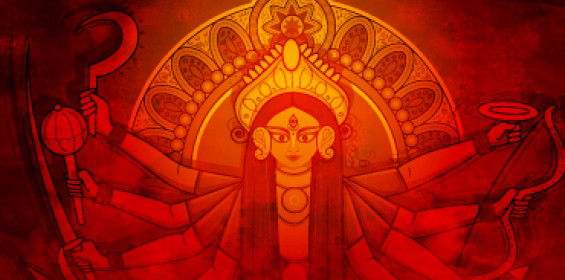Amazing facts about India.
We are finally becoming eco-conscious and eco-edgy. Tips on water conservation are trendy, small eco-friendly gestures become gratifying while we doff our hats to anyone who seems eco-intelligent.
If only. If only we went deep into our ancient farming methods and our history of agriculture to understand how seamlessly lifestyles were integrated with the environment. Even if we don’t talk about the inherent sacred respect the Indian ancients had for nature. Let’s leave aside metaphysical matters or those of heart. The ancients understood the importance of agriculture, were brilliant at logic, conservation, and intelligent at long-term decision-making. We can clearly appreciate this especially amidst the current water crisis in India and the struggle of the Indian farmer with modern-day fertilizers.

The ancients clearly understood that agricultural yield and water would go hand in hand. Even hundreds of years ago, both collectively contributed to the rich agricultural scenario in medieval India. The intelligent water grid systems connected to different local water bodies across the land and 9,50,000 water harvesting projects ensured a round-the-year abundance of water.
Unfortunately, today’s agriculture has come largely to depend on the monsoon. This dependence has led to fewer crops and frequent draughts. Amazingly, ancient farming methods yielded more crops than today.
The tough climatic conditions in Medieval Europe would allow only for one harvest in a year unlike in the tropics which were more conducive to agriculture. The Indian climate would favor three harvests a year while indigenous water harvesting projects led to sizeable yields of 2.5 times more than today’s deficient yields.
Scientific yet multi-cropping techniques used by the farmers led to rich yields of food and other agricultural products, such as cotton, indigo, and spices. A study in the history of agriculture will include British records that speak of yields as high as 18 tons per hectare.
These rich yields were celebrated in everyday life. Multi-harvests have been glorified in local Bengali literature while Assam had three bhog festivals or Bihus syncing with their farming cycles. To date, the three bhog cycle continues to be the yardstick to measure the industrious nature of farming and yields.

The ancients employed many agricultural marvels. Here are a few:
The 53,000 lakes in Andhra Pradesh
Andhra Pradesh is a land that has many rivers: Godavari, Krishna, Swarnamukhi, Pennar, Tungabhadra, Vamsadhara, Nagavali, Manjeera, Pranahita, Musi amongst others.
This land has had prosperity not because of the rivers alone. A series of lakes, cheruvus, built in the southern Andhra Pradesh region, in the Krishna and Godvari belt, also substantially contributed to the land’s prosperity. In fact, there are over 53,000 lakes and ponds, which were built more than 1,000 years ago in this region of the erstwhile Madras Presidency, of which coastal and Southern Andhra Pradesh formed a major part.
If we put these embankments, bunds of these lakes together, the length is long enough to encircle the earth at the equator.
Despite the availability of perennial rivers like Krishna and Godavari, why are there so many lakes in Andhra? Because they understood the importance of agriculture and water conservation. Because, out of 8,760 hours in a year, it actually rains totally only for 100 hours on an average in a year. And during these 100 hours, it really pours.
Without these tanks, it would cause floods and damage during the rainy season and droughts in the non-rainy season. Understanding this topography of the land, the wise men of yesteryears had planned, designed, and built a series of lakes, or cheruvus, to harness the waters as it rains.

When the lake in one village fills up, the waters descend through a feeder canal to the next village in the chain. This is how they took their share of the waters during the monsoon and shared the excess in a planned way with the villages downstream.
The satellite map of these lakes, or cheruvus, shows that many of these lakes are still existing.
This 1/6th coverage of the land with water also gave the land enough humidity throughout the year. This humidity kept down the temperature of the landscape and made the land salubrious for the people to live in.
Due to this 1/6th land covered by water bodies and the consequent humidity, crops gave forth bountiful harvests. Roots absorb water which circulates through the plant, but it is the humidity in the air that prevents this water from evaporating away from the leaves and shoots.
The land yielded three harvests per year. This made the population prosperous overall.
Balarama & the bend in the river Yamuna
There is a bend in the river Yamuna near Vrindavan at Kamyavan, Ram Ghat. The path of the Yamuna seems to have deviated and turned unnaturally at this place.
The legend goes that Balarama, the brother of Krishna was a well built and strong man. He was well versed in the art of mal yuddha, wrestling and gada yuddha, fighting with the mace. He is also called Halayudhapani, bearer of the plough, hala, since the plough as we use it today, is considered to have been designed by him. As the legend goes, once in a stupor, Balarama took his plough and changed the course of the Yamuna.

While this legend may seem like a story, there could have been a need for such an act during the times of Balarama. In the tumultuous period around 3,000 BCE, the waters which earlier flowed into the river Saraswati, due to tectonic plates, moved east, changed course and joined the Yamuna. This happened due to a series of earthquakes in the Shivalik range of the Himalayas.
The effort of Balarama in changing the course of the river Yamuna was probably to adjust the river to the rumblings in the Himalaya. This course correction made the river flow in a manner conducive to the inhabitants of Braj Bhumi.
The legend, the river flow, geo-morphology, the satellite mapping of the change in direction of the river flow and the location of temple, all tell the same story.
Interestingly, this deed of Balarama has been one among the popular themes of the paintings of the medieval period.
Did Ganga flow from Shiva’s head?
Bringing the Ganga river from the peaks of the Himalayas to the plains was a historic, hydraulic, civil engineering feat of ancient India by King Bhagiratha.
Those days, the land in the northern plains was a desert, owing to the dearth of proper monsoon rainfall. Bringing the Ganga river from the Himalayas was an effort, spanning over five generations, starting from King Sagara to his 60,000 sons to his grandson, Anshuman to King Dileepa and finally King Bhagiratha.
The project involved tasks such as planning, charting the course, digging the channel, breaking through the gorge and leading the Ganga through the channel.
Sir William Wilcox, the director of irrigation in India and Egypt, states in his book that the Ganga (Bhagirathi) was a canal constructed by our ancestors. This amazing feat, to get the river to travel, all the way, from the roof of the world to the sea, would rank as the greatest feat of engineering in the history of mankind… not just in India, but… in the world.
Puranic texts equate Shiva’s head from where the Ganga flows from the ancient Bindu Sarovar lake. Sagar putras, the 60,000 sons of King Sagara, were given the task of digging a canal from the Himalayas, right upto the seas, disturbing the penance of Rishi Kapila. Kapila means brown, hot and liquid, similar to molten lava. Legend has it that the putras were burnt by the Rishi’s glare. Truth be told, they were burnt alive in a volcanic activity, when the job neared completion.
The legend of Ganga also symbolises the feat of Rishi Jahnu in bringing out the waters of Ganga from cavern; in commemoration the Ganga is also called Janhavi.
Perhaps it’s time that we turn the pages of history to save our future.
The material has been sourced from @bharathgyan. This research team, led by a passionate husband-wife duo - Dr. DK Hari and Dr. Hema Hari, unearth some of India’s untold stories and make them contemporary. You can click here to buy any of their books on Indian civilization.





























